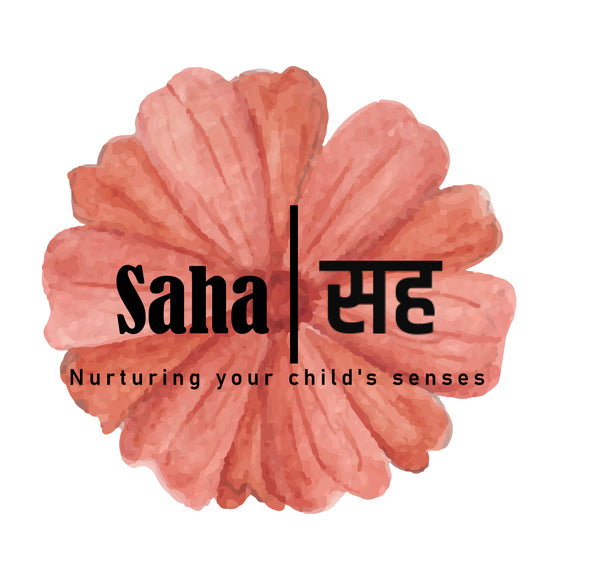
The Power of Open-Ended Play: Nurturing Creativity, Independence, and Development
Share
Open-ended play has emerged as a foundational tool in childhood development, celebrated for its ability to spark creativity, problem-solving, and emotional growth. Unlike close-ended toys or activities that have defined rules and outcomes, open-ended play materials encourage exploration without predetermined goals, making it an essential part of fostering well-rounded development in children. From building towers with wooden blocks to creating imaginary worlds with simple natural elements, open-ended play provides countless opportunities for children to engage in meaningful learning experiences.
Understanding Open-Ended Play
At its core, open-ended play allows children to create, explore, and decide how to interact with materials on their terms. For instance, a wooden block can be a building tool one day and a character in a story the next. This fluidity encourages children to think creatively and find solutions independently, which are skills critical for their cognitive and emotional development.
In contrast, close-ended toys or activities—such as puzzles or board games—have a predefined purpose, where the goal is to “win” or “complete” the activity. While these toys have value in teaching certain skills, they lack the freedom of open-ended materials, which allow children to decide how play unfolds (Montessori in Real Life, 2020).
The Benefits of Open-Ended Play
-
Fosters Creativity and Imagination
Open-ended materials such as wooden toys, fabrics, and natural elements provide no fixed instructions, allowing children to use them in countless imaginative ways. This freedom helps children explore their creativity: a simple set of blocks can become a bridge, a home, or even a rocket ship. By reimagining materials over and over again, children develop flexible thinking and innovation.Nature-inspired resources like stones, shells, or leaves amplify this process. Natural, simple objects are particularly versatile, helping children connect their creativity to the real world around them.
-
Enhances Problem-Solving and Critical Thinking
Open-ended play promotes experimentation and exploration, teaching children to learn through trial and error. For example, stacking uneven blocks or balancing loose parts requires children to problem-solve and adapt when their first attempts fail. This hands-on learning encourages critical thinking, perseverance, and spatial reasoning. These skills become the building blocks for tackling complex challenges as children grow. -
Promotes Emotional and Social Development
Open-ended play is a safe space for children to process emotions and navigate social dynamics. Through imaginative play, children can act out situations they observe in daily life, exploring roles, emotions, and interpersonal relationships. For example, children might engage in pretend play with dolls or figurines to process a real-world event, such as a family outing or a doctor’s visitSocially, open-ended play encourages collaboration and communication. In group settings, children negotiate roles, share ideas, and work together to create shared imaginary worlds, building empathy and teamwork.
-
Nurtures Independence and Confidence
One of the most profound advantages of open-ended play is its ability to cultivate independence. Because there are no instructions or “right” answers, children take ownership of their play experiences. Montessori principles emphasize this self-directed learning, where children gain confidence by exploring and creating without adult intervention. -
Encourages Minimalism and Focus
Contrary to the notion that more toys equal better play, open-ended play thrives in a minimalist environment. A fewer number of high-quality, versatile toys allow children to focus and engage deeply in play. Reducing clutter can inspire creativity: 'Less is more' when it comes to open-ended materials because children learn to fully explore the possibilities of each object.
How to Encourage Open-Ended Play at Home
Choose Versatile, Simple Materials
Select toys and materials that can be used in multiple ways, such as wooden blocks, fabric pieces or scarves, natural materials like sticks, stones, or leaves, loose parts like balls, rings, or containers. These materials are timeless, sustainable, and adaptable, encouraging children to explore their creativity without limits.
Embrace Nature
Incorporate nature into play by providing access to outdoor spaces or bringing natural elements indoors. Items like pinecones, driftwood, and shells are wonderful open-ended tools that inspire sensory exploration and imaginative play.
Create a Minimalist Play Space
Fewer toys often lead to richer play experiences. By simplifying the environment and limiting distractions, you allow children to focus deeply on their imagination and ideas.
Let Children Take the Lead
Adults should act as facilitators rather than directors of play. Provide resources and a safe space, then step back to allow children to guide their play. This autonomy is essential for building confidence, decision-making, and problem-solving skills.
Why Open-Ended Play Matters
Open-ended play is not just about fun—it lays the groundwork for essential life skills that will benefit children throughout their lives. By nurturing creativity, critical thinking, independence, and emotional intelligence, open-ended play equips children to adapt, innovate, and thrive in an ever-changing world.
As parents and educators, embracing the “less is more” philosophy and providing thoughtful, versatile materials can help children unlock their full potential through play.
Check out our collection of open-ended play designed for holistic growth and development of your child here.
References
-
Grimm’s. (2023). Open-ended play: Our 5 best tips for free play. Retrieved from https://www.grimms.eu/en/magazin/open-ended-play-our-5-best-tips-for-free-play#:~:text=Less%20is%20more&text=So%20go%20down%20to%20eye,determination%20and%20a%20certain%20freedom.
-
Montessori in Real Life. (2020). Close vs. open-ended toys in Montessori. Retrieved from https://www.montessoriinreallife.com/home/2020/12/12/close-vs-open-ended-toys-in-montessori.
-
Sticks and Stones Education. (2020). The ultimate open-ended play guide. Retrieved from https://www.sticksandstoneseducation.com.au/blogs/ourstories/the-ultimate-open-ended-play-guide?srsltid=AfmBOorH5qFs8c-axA54LnbEbY0cKzQk9CvpajMFvri0v-179JoEgqKW.
